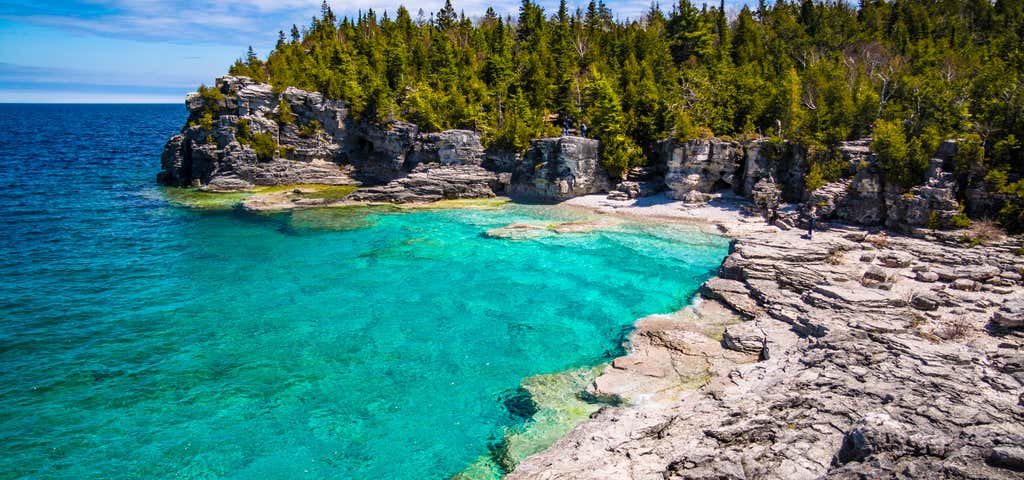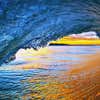“In the heart of the World Biosphere Reserve”
In the heart of a World Biosphere Reserve, the 'Bruce' is place of global significance. Thousands of visitors come each year to experience the massive, rugged cliffs of the park, inhabited by thousand year old cedar trees, overhanging the crystal clear waters of Georgian Bay. The park is comprised of an incredible array of habitats from rare limestone barrens (i.e. Alvars) to dense forests and clean lakes. Bruce Peninsula National Park is a national park on the Bruce Peninsula in Ontario, Canada. Located on a part of the Niagara Escarpment, the park comprises 156 square kilometres and is one of the largest protected areas in southern Ontario, forming the core of UNESCO's Niagara Escarpment World Biosphere Reserve. The park offers opportunities for many outdoor activities, including hiking, camping, and bird watching. The park has trails ranging in difficulty from easy to expert, and connects to the Bruce Trail. Bruce Peninsula National Park also offers visitors vistas to view either the sunrise or sunset, the rocks of the Niagara Escarpment, and the wildlife, which includes black bear, many species of birds, wild orchids, massassauga rattlesnake, and much more. The park was the subject of a short film in 2011's National Parks Project, directed by Daniel Cockburn and scored by John K. Samson, Christine Fellows and Sandro Perri. The park offers opportunities for many outdoor activities, including hiking, camping, and bird watching. The park has trails ranging in difficulty from easy to expert, and connects to the Bruce Trail.Bruce Peninsula National Park also offers visitors vistas to view either the sunrise or sunset, the rocks of the Niagara Escarpment, and the wildlife, which includes black bear, many species of birds, wild orchids, massassauga rattlesnake, and much more.The park was the subject of a short film in 2011's National Parks Project, directed by Daniel Cockburn and scored by John K. Samson, Christine Fellows and Sandro Perri. The Niagara Escarpment runs from near Rochester, New York, to Tobermory, then on to Manitoulin, St. Joseph Island and other islands located in northern Lake Huron where it turns westwards into the Upper Peninsula of northern Michigan, south of Sault Ste. Marie. The escarpment then extends southwards into Wisconsin following the Door Peninsula and then more inland from the western coast of Lake Michigan and Milwaukee ending northwest of Chicago near the Wisconsin-Illinois border. It forms the backbone of the Bruce Peninsula and shapes the northern boundary of most of the park and provides the park with some of its most spectacular scenery. The rock of the escarpment is very old. Approximately 400 million years ago, this area was covered by a shallow tropical sea teeming with life in the form of plant-like animals, crustaceans, living corals and mollusks. It would have looked much like the present-day Great Barrier Reef of Australia. When the sea began to dry up, the minerals dissolved in it became more and more concentrated. Magnesium in the water was absorbed into the limestone, which then became a softer, slightly different sort of rock, called dolomite. The harder dolomite limestone stones forms much of the rock of the escarpment cliffs along Bruce Peninsula National Park's Georgian Bay shoreline. As at Niagara Falls, the dolomite "caprock" erodes more slowly than the rock below it, creating the sculptured cliffs for which the area is famous. Since the last Ice Age, water levels in the region have undergone great changes. Softer limestone has been eroded away by water action, leaving magnificent overhanging cliffs at various points along the shore. These are the big attraction of the Cyprus Lake trails. Where erosion has cut more deeply, caves have been formed, such as the famed Grotto on the shore between the Marr Lake and Georgian Bay Trails. Great blocks of dolomite, undercut by wave action, have tumbled from the cliffs above and can be clearly seen below the surface of the deep, clean waters of Georgian Bay.
Reviews
Excellent location for SCUBA! Fathom Five National Marine Park of Canada. Here's a link for those interested:
http://www.pc.gc.ca/eng/amnc-nmca/on/fathomfive/index.aspx
Very beautiful hike to the Grotto. It is not free, so make sure to make a reservation as they only had 2 time slots available. The hike to the Grotto has a nice path, but getting anywhere near the grotto is very difficult, especially coming back up. Many people struggled and ended up not going down to the grotto, but turning around after they rested as it is a 30-45 minute walk to the location. Very crowded after 10am, almost annoyingly crowded. Beautiful pictures and great views though, which is why i gave it a 5. If i had children i would have rated it lower due to it being too busy for little kids to enjoy
Ahh witcher 3 we meet again
Walked for hours, unfortunately didn't see much wildlife, only a few squirrels and a frog. Good variety of trails and scenery though.
Be the first to add a review to the Bruce Peninsula National Park.
/-81.61381,45.23888,14/300x172@2x?access_token=pk.eyJ1Ijoicm9hZHRyaXBwZXJzIiwiYSI6ImNsdjQ5N2VtZDA2bW8ycW13ZHAxeGhjbjkifQ.UIccpoAxc7g3BAuK4s9vjg)
Bruce Peninsula National Park
Hours
- Sun - Thu, Sat: 9:00 am - 5:00 pm
- Fri: 9:00 am - 9:00 pm
Problem with this listing? Let us know.
Has RV parking changed? Let us know.
-
Parking
-
Pets Allowed
-
Restrooms
-
Wifi
-
Wheelchair Accessible
-
Credit Cards Accepted
-
Outdoor Seating
Parking, Dining
Nearby Hotels
Related Trip Guides
The Best Canadian Campgrounds, RV Parks, and Destinations for RVers
- 21 Places
- 119:17
- 6,365 mi




